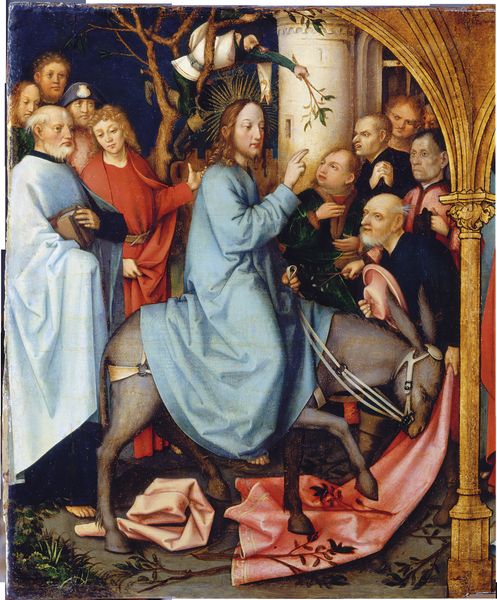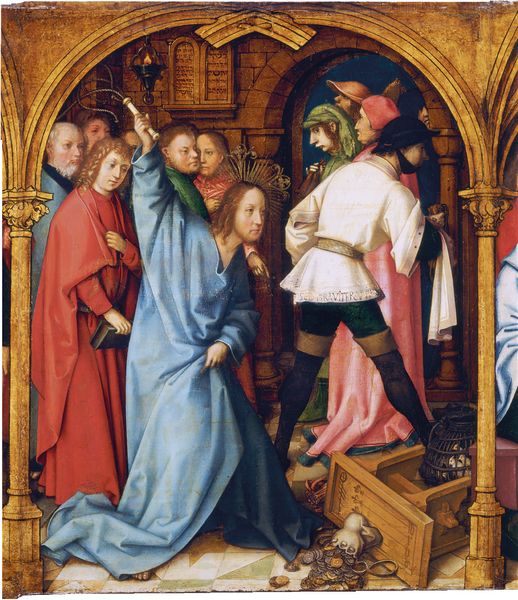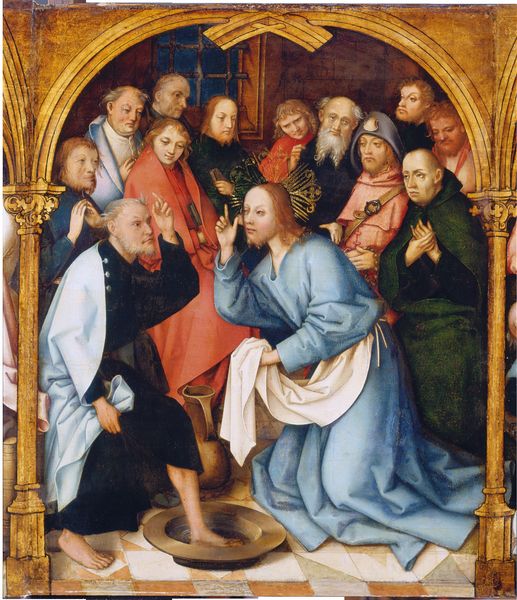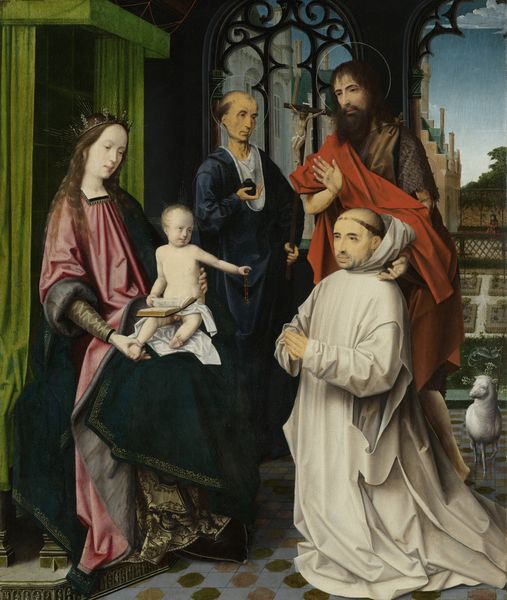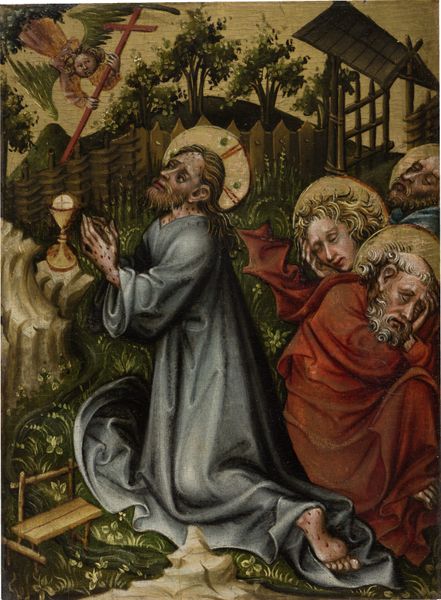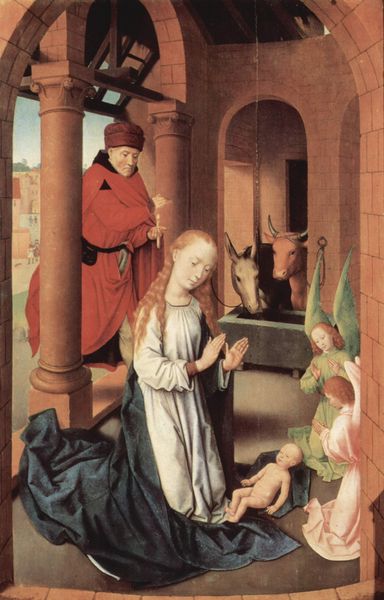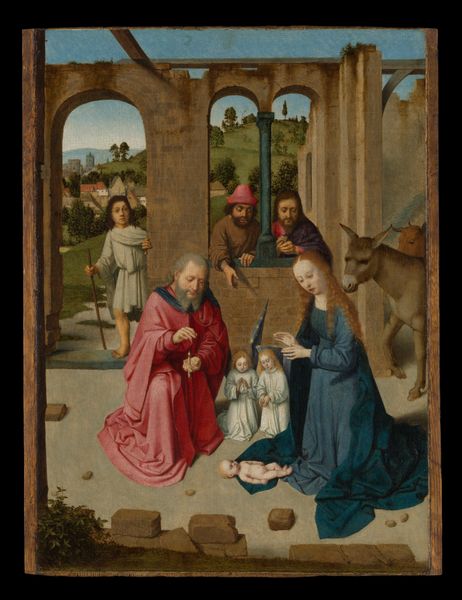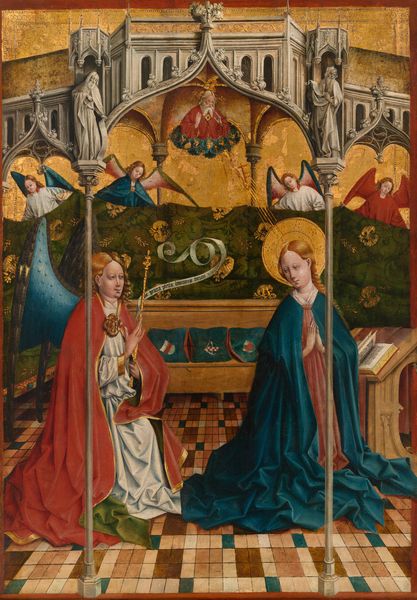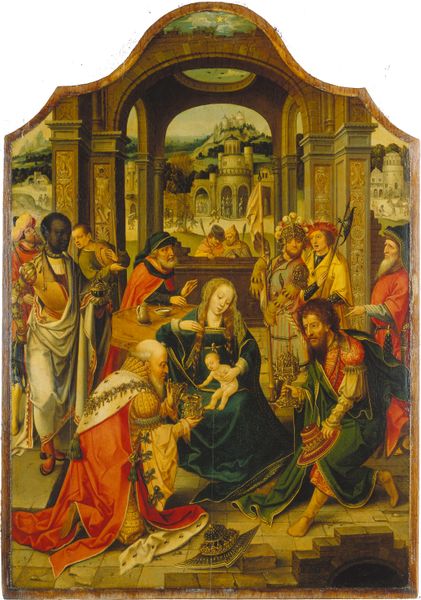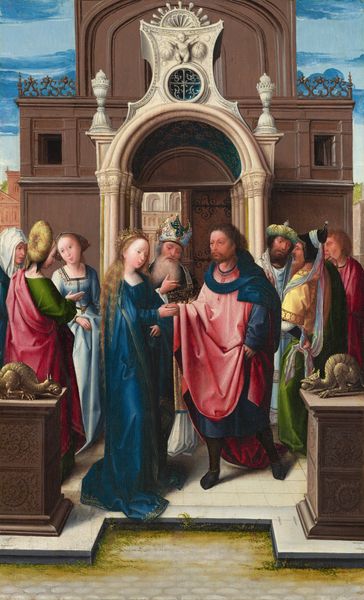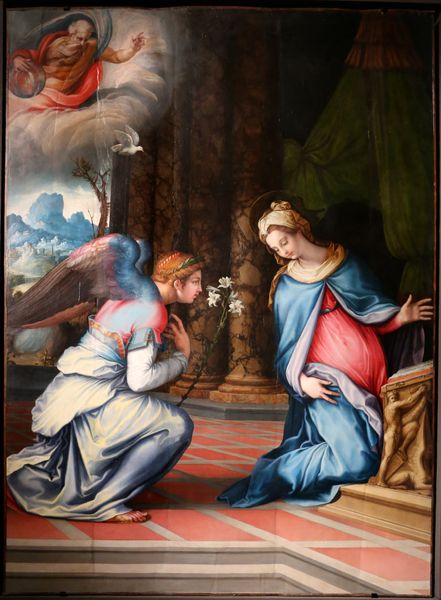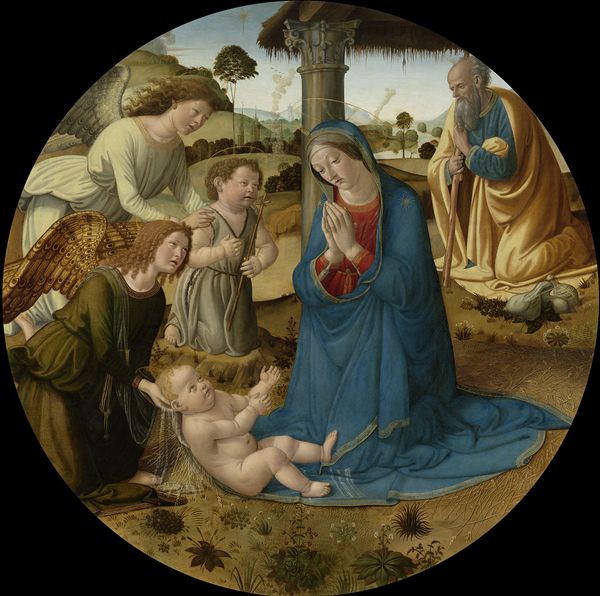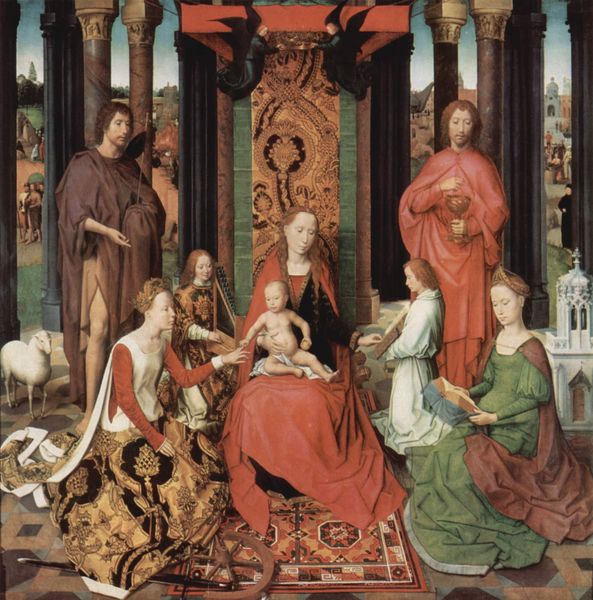
painting, oil-paint
#
painting
#
oil-paint
#
figuration
#
11_renaissance
#
oil painting
#
13_16th-century
#
history-painting
#
early-renaissance
#
portrait art
Dimensions: 267.1 x 64.5 cm
Copyright: Public Domain
Editor: So, here we have Hans Holbein the Elder's "The Agony in the Garden," painted around 1501, in oil. I'm really struck by the contrast between the serenity of Jesus praying and the chaotic scene unfolding in the background. It's like two separate worlds colliding in one panel. What draws your eye when you look at this piece? Curator: My gaze is directed to how Holbein presents a moment rife with political and social implications. Notice how the sleeping disciples, presumably figures of authority, are juxtaposed against Christ’s supplication. Do you think this could be read as a commentary on leadership at the time? Editor: That's a fascinating thought. I was so focused on the religious aspect, I didn’t consider a socio-political reading. Perhaps the disciples’ slumber represents the Church's complacency, their failure to heed Christ's teachings amidst societal unrest. Curator: Precisely. And observe the mob in the background, ready to arrest Jesus. Holbein subtly points towards the societal forces at play that condemned individuals who threatened the established order. Who is orchestrating this mob? What powers allow such brutality? Art of this period was always caught up in patronage networks, theological conflicts and civil tensions. Editor: So, you're saying it's not just a depiction of a biblical story, but also a reflection of the anxieties and power dynamics present in Holbein's own time. The use of oil allows such textural detail! Are there particular colors at play to highlight some of the political commentary? Curator: Notice the subdued tones and strategic light which create almost two scenes, two states of power at conflict with each other. Consider who commissioned such a powerful piece, and why it's preserved today, and a different understanding emerges. It provides clues on not just what was portrayed, but who was given the means to create art. Editor: That completely shifts my perspective. I see it less as a purely religious piece now and more as a statement about societal power structures, using a biblical narrative as a lens. Thanks, I hadn't really considered who may have sponsored the piece, and the image politics within patronage. Curator: Absolutely, by understanding the social context in which the artwork was produced, its reception and preservation tells as much about what we should read into a historical artefact.
Comments
Join the conversation
Join millions of artists and users on Artera today and experience the ultimate creative platform.
